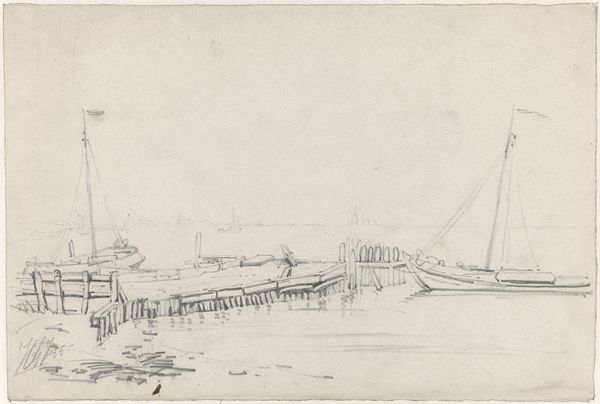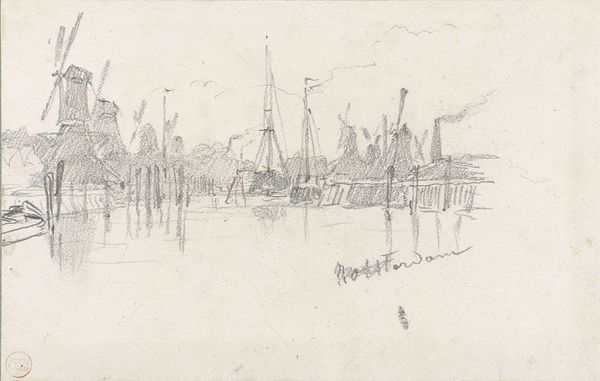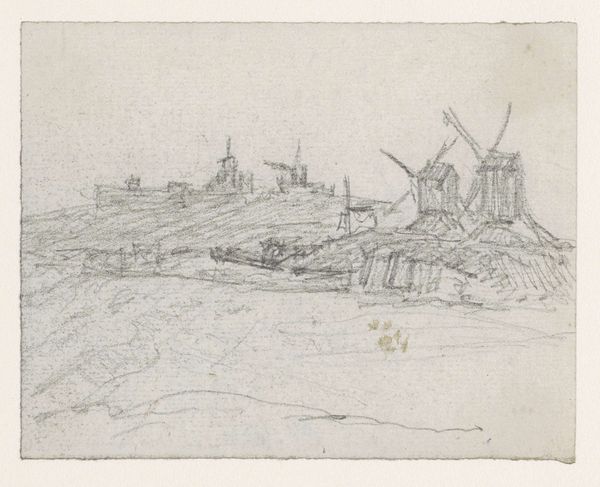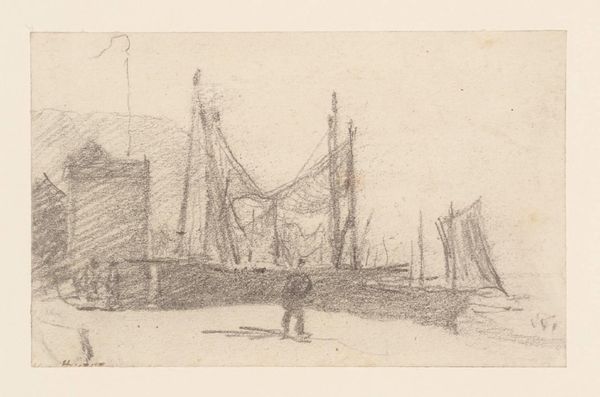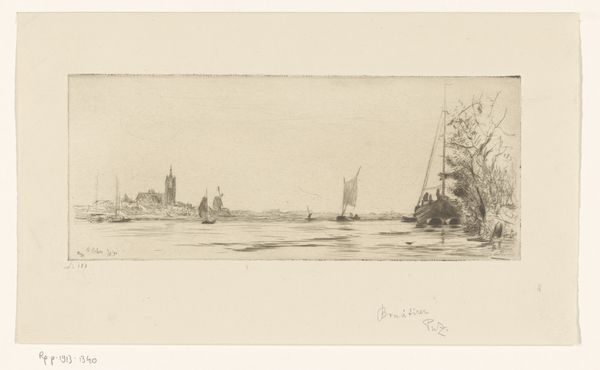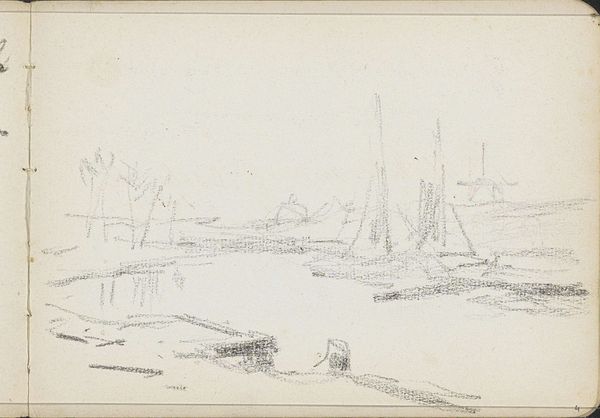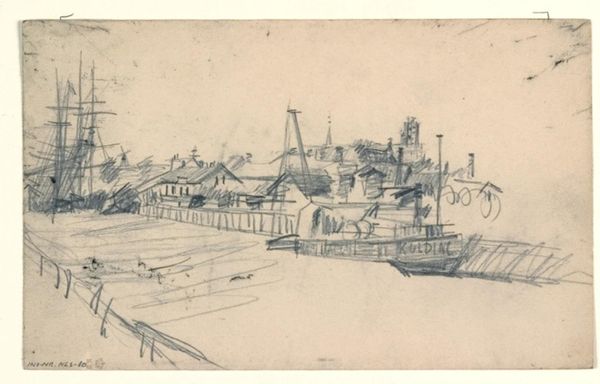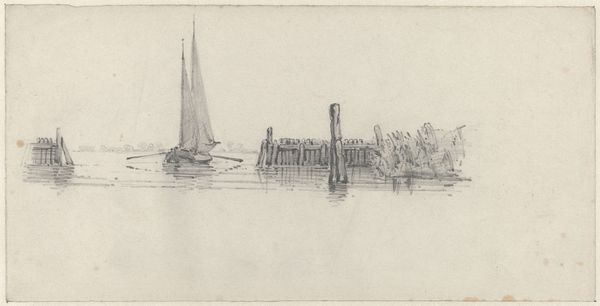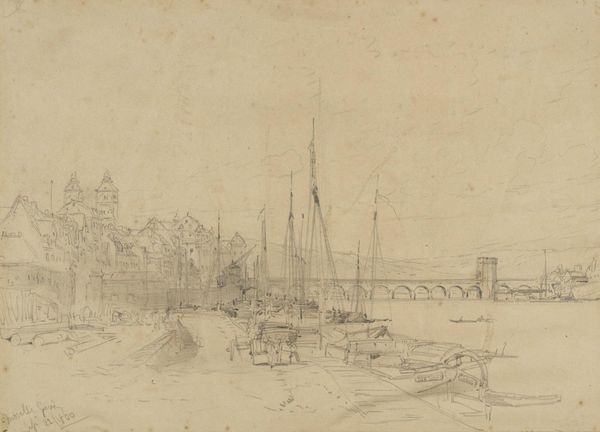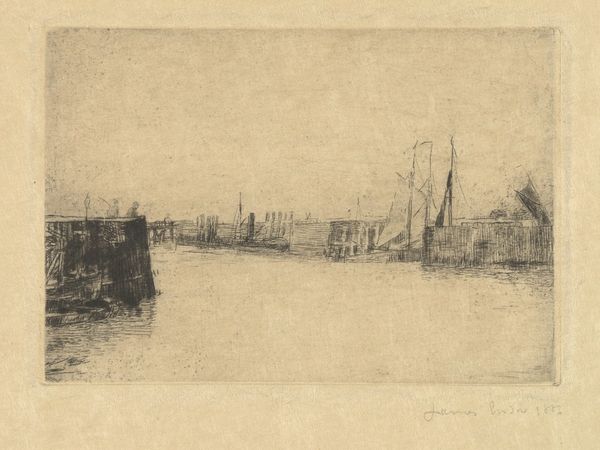
Copyright: Public Domain: Artvee
Thomas Moran made this pencil on paper drawing, ‘St. Paul’s from Under Waterloo Bridge, Low Tide,’ in 1882. The composition presents London's skyline as seen across the River Thames. The hazy light and muted tones create a serene yet industrial atmosphere, an aesthetic experience characteristic of tonalism. The arrangement of elements in the drawing reveals Moran’s formal considerations. The horizontal lines of the river and buildings are balanced by the vertical emphasis of masts, piers, and St. Paul’s Cathedral itself. This contrast creates a spatial tension, asking the viewer to negotiate the relationship between the natural and the built environment. The loose, gestural lines are less about precise representation and more about capturing the essence of a moment. Consider the way Moran uses the structural clarity of the architectural forms to suggest stability amidst the fluid, shifting nature of the water and sky. This interplay functions as a commentary on the industrial era's impact on the landscape. The drawing presents a moment of equilibrium, an attempt to reconcile the enduring presence of the past with the dynamic forces of modernity.
Comments
No comments
Be the first to comment and join the conversation on the ultimate creative platform.
